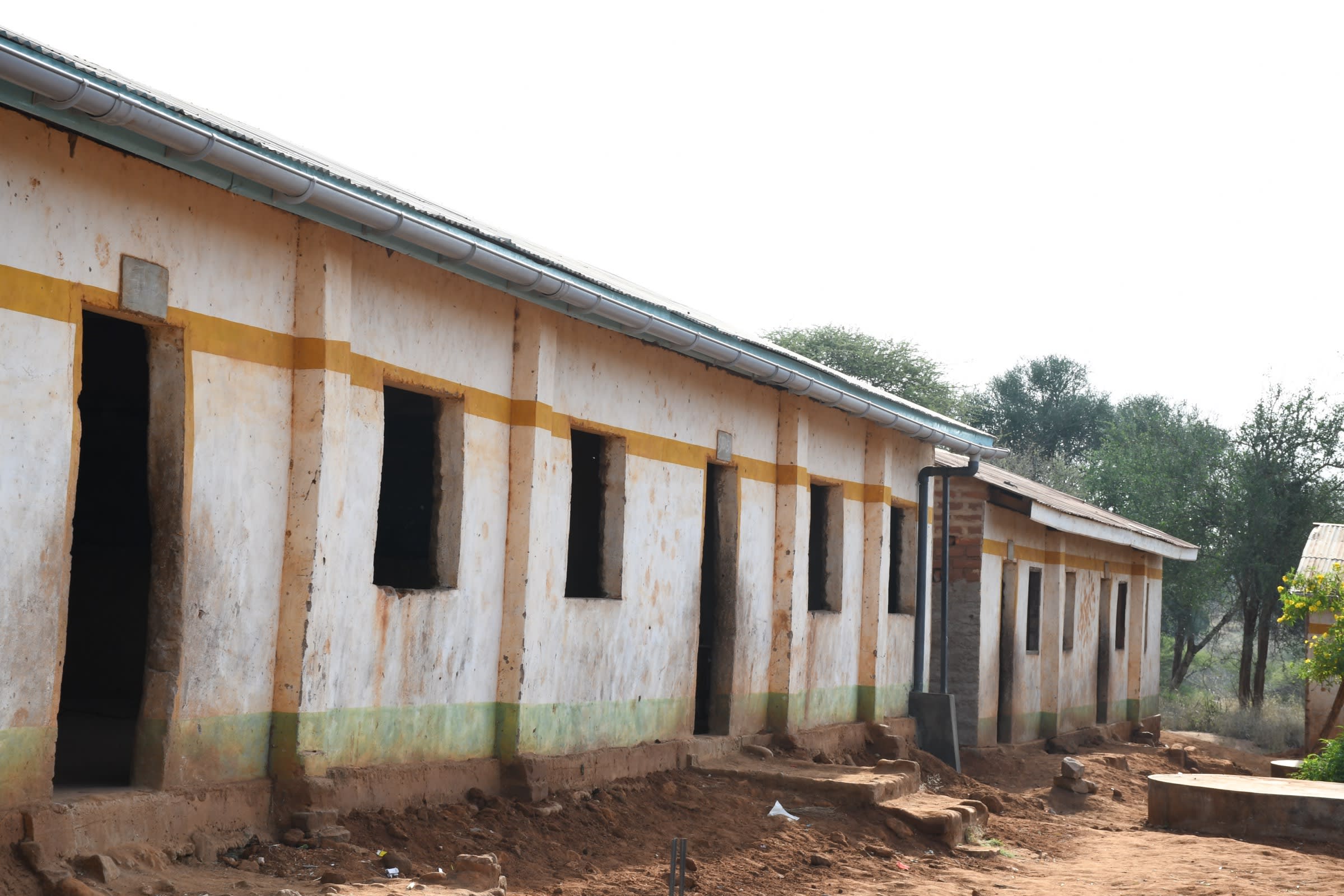Kwa Maluvyu Primary School is located in a remote rural area in Kathonzweni ward of Makueni County, Kenya. The environment is relatively vegetative with thick bushes and indigenous trees.
It is a small school with 86 students and staff, but the 2 small 10,000-liter rain tanks on school grounds are the only source of water for the school. During the dry season, the school tanks are often depleted and the students are expected to carry water from home for the cooking and cleaning needs at school.
Often, the water pupils bring is insufficient for use and the students are sent back out of class to fetch water from the nearest river scoop holes. These are holes dug into the dry riverbed by hand. They are capable of providing only sandy and muddy water completely open to contamination from people and animals. The process of scooping from the shallow puddle into students' containers is time-consuming, too.
These frequent trips to fetch water interrupt and waste a lof the students' precious learning time. The students always feel thirsty during their lessons, but with insufficient water for drinking, they tend to lose concentration in class which leads to poor academic performance, say teachers and staff.
"When there is no water in school, students are exposed to the use of dirty water. Insufficient water supply deteriorates the academic performance of the students and also demoralizes them from reaching their full potential," said Deputy Head Teacher Elizabeth Kioko.
The water brought from home and collected at the river is often unsafe. As a result, the teachers report that the students suffer from a high rate of waterborne illnesses - an additional burden that causes students to miss class.
The hygiene and sanitation of the school are below average, reported our field officers. The latrines are not washed frequently and expose the students to risks of infections. Pupils do not wash their hands after visiting the latrines or before eating, which is dangerous as it increases the chances of fecal to oral disease transmission. Their classrooms are rarely cleaned. Generally, the hygiene and sanitation standards are very low due to the lack of water available to clean and use for handwashing.
"We are usually expected to carry water to school which is very exhausting and the water is never enough so we are forced to carry water every day," explained Samson, a student at the school.
"We always feel very thirsty during class time and after games in the afternoon but there's usually not enough water to drink."
The school was established in 1988 by the Kathonzweni Catholic Church in collaboration with the area community members. The school has grown over time through the funds from the government and the County Development Funds. The Catholic Church was majorly involved in the establishment of the school's infrastructure such as the classrooms while the government has been instrumental in the supply of both text and exercise books, sanitary towels for the girls, and food. The school has 4 blocks comprising of the classrooms, offices, latrines, and kitchen. The classrooms are made of bricks with iron sheet roofing, windows without panes, and uncemented floors.
Rain Tank
We will build a 104,000-liter rain tank for this school, making the others look tiny in comparison. Because of how rarely it rains in Southeastern Kenya, this tank's large volume is designed to store as much water as possible during the seasonal rains, making more water available through the dry months. This water will benefit the students, teachers, and supplementary staff.
Parents will mobilize the materials needed for construction, including sand, stones, and water. They will also lend their strength and time to help with the construction. We will complement their materials with a skilled artisan to lead the project in addition to providing the tools, lumber, metal, cement, and gutter system.
As soon as the tank has time to cure, it can begin collecting rainwater for the school's use.
Training
We will train students and staff on sanitation, hygiene, and other topics for 1 day. Those in attendance will form a school health club that will promote good hygiene and sanitation practices both at school and at home. They will learn all of the steps to proper handwashing, how to treat water, and how to keep their environment clean. The school will also be taught how to best oversee and maintain their new rain tank and handwashing stations.
Handwashing Stations
3 handwashing stations will be installed upon the project’s completion and before training. These are 1,000-liter plastic tanks fitted with 3 taps each. The student health club and school management will be responsible for making sure the tanks are filled with water and that a cleaning agent such as soap or ash is always available.

 Rainwater Catchment
Rainwater Catchment
 Rehabilitation Project
Rehabilitation Project
































